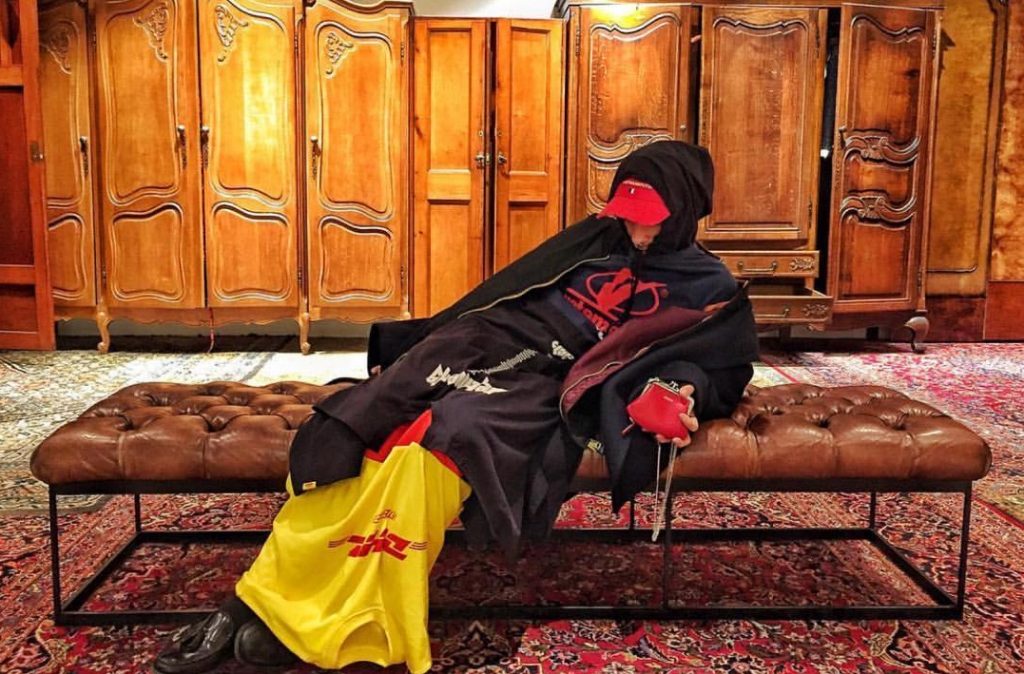Vetements designer Demna Gvasalia and his brother and label CEO, Guram Gvasalia, continued to clap back at claims made by streetwear site HighSnobiety that the brand is done among trend-setting retailers. Following a Vetements Instagram post dismissing the story as “wannabe journalism,” Guram has followed with interviews with WWD last week and today (April 3, 2018) also check in with British Vogue.
In comments to WWD, Guram implied HighSnobiety’s willingness to take down Vetements was in part because the label doesn’t advertise with the publication. “Sadly some journalists today are more concerned with writing fake news and reposting shocking headlines rather than checking facts to show the full picture,” said Guram in a written statement. “It is especially upsetting to see some fashion writers, fueled by their personal agendas, attacking young independent brands while sucking up to big conglomerates for their advertisement budgets.”
Throwing its own quiet shade at HighSnobiety‘s entirely anonymous source base, WWD checked in with a wide range of well-regarded U.S. and U.K. retailers (Jeffrey New York, Harrods, The Webster, Saks Fifth Avenue, Hirshleifers and Maxfield) all of which went on the record positively about demand for Vetements.
HighSnobiety provided WWD with a statement in which it doubled down on the brand’s decline and even went so far as to describe it as over. “The buyers we spoke to, many of whom work at smaller, independent retailers, often rely on a brand’s strength to help curate their offer, and cater especially to the type of discerning consumer we speak to. The moment a brand like Vetements ends up in larger, more mainstream retailers, it’s a hit to their perceived authenticity. While Vetements is far from dead, to many in the industry, especially the selective market we cater to, it is ‘over,'” read the statement.
Understandably HighSnobiety didn’t want to admit to practicing weak tea journalism, but its explanation for the Vetements take down doesn’t ring true when one consider that most of the brands it covers have the same exact stock lists, which the vast majority of brands would kill to be included on.
In an interview with British Vogue, Guram went a step further than the WWD article, revealing the four-year-old, privately-held company’s financials. “We have been profitable from season one and our total annual turnover has been increasing ever since,” said Guram. “We had a fifty percent growth in the current financial year and a ten thousand percent growth in the past three years. Currently we are making eight digits each season.”
He also implied the company’s value was close to a billion euros, stating, “We are very happy where we are now; however to satisfy your curiosity, the value of the company is not in the M but rather in the B-region.”
British Vogue also called on four mostly Asian buyer sources (Boon the Shop, Adelaide, Joyce and SVMoscow in Moscow), all of which were upbeat on demand for the label and its growth prospects. “Even though our budget increased more than double from last spring/summer, as of March 31st, sell-through of spring 2018 is already 62 percent in comparison to 64 percent for spring 2017,” said Sakiko Hasegawa, a boyer for Tokyo’s Adelaide.
While multiple buyers are weighing in affirmatively on Vetements, since the article was published the label’s Instagram comments are full of naysayers, suddenly dogging the brand for the sames issues HighSnobiety critized, a lack of originality and pricing.
Existence as a private label sans the massive budget of global brand like Nike or Louis Vuitton has always been precarious. Whether there’s any truth to what HighSnobiety wrote, in the eyes of the incredible fickle hype-oriented customer, there’s now blood in the water. Fortunately for Vetements, the same crowd will soon grow bored with mocking Vetements and will move on to another label or trend to mock. Continuing to grow and stay relevant will remain a challenge for Vetements and all brands.
Meanwhile, for those who want to practice ethical journalism but aren’t sure how to go about doing so, here’s a handy handbook via New York University’s journalism school.



